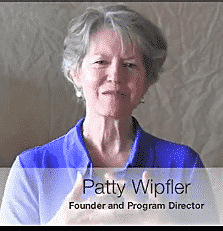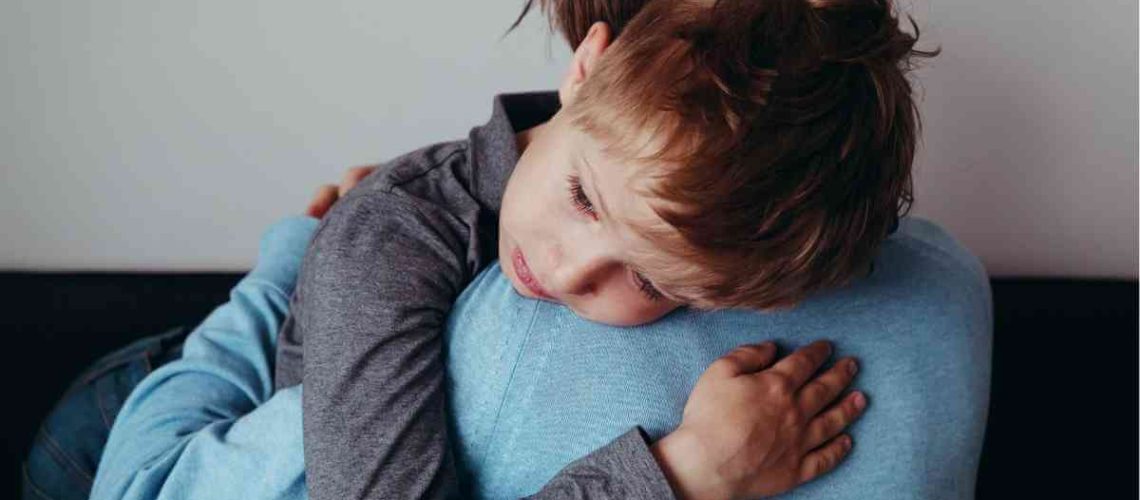 We all struggle to deal thoughtfully with natural disasters and senseless violence. A cascade of feelings is triggered in each of us when we are exposed to images of death and strife. It’s shocking to witness the human and material expense of the age-old tool of violence being exacted from us, our loved ones, and our communities.
We all struggle to deal thoughtfully with natural disasters and senseless violence. A cascade of feelings is triggered in each of us when we are exposed to images of death and strife. It’s shocking to witness the human and material expense of the age-old tool of violence being exacted from us, our loved ones, and our communities.
What is a parent to do? How do we explain natural disasters and senseless violence to our children? And how do we manage our own fear and anxiety while we keep fulfilling our responsibility to protect and nurture them? How do we teach them peaceful ways of resolving differences, while violence is a tangible, nearby threat?
There is, at heart, no way to understand murderous acts, whether they are done to gain political power or are, like neighborhood crime, a manifestation of the failures of a society to identify and help its most troubled individuals.
People hurting people simply doesn't make sense. Earthquakes, floods, and landslides destroying entire towns doesn't make sense. Children's minds are jammed with upset and hurt when they are exposed to violence of any kind—because it is inherently offensive, inherently inhuman. So we as Moms and Dads must handle these sad and unwelcome events in ways that hurt our children as little as possible. But we cannot avoid the fact that violence is hurtful to them.
Here are some thoughts about caring well for our children and ourselves during difficult times:
First, we need to set aside time to talk with each other, and work through some of our feelings and reactions, at times and places separate from our children. We adults carry a heavy load of feelings about the current events no matter how hard we try to tamp these feelings down. We have been made to feel helpless and hopeless about current events and the historical events that have brought violence over and over again. We've had to cover our grief and outrage with resignation or indifference, because there is so little room in our society for the full expression of healthy protest. So often, the first task is to remember what and whom we care most about.
From there, we can remember the hopes we had as children that the world would be sweet, safe, and just. We need to let our thoughts about whom we love and our longings for safety and justice lead to the appropriate human response—crying, trembling, and an open show of upset. We need to do this with other adults. Accessing our gut feelings will help us recover our ability to use the power we do have, so we’re hopeful enough to do what we can in our families and communities to make the world right.
It is important for our children to see that we care about people, about justice in the world, and about bringing an end to people harming each other. But they shouldn’t become our only sounding board. If you are upset, go ahead and cry openly, but without detailed explanation of your feelings. “I'm sad about something I heard on the news” is fine, along with “and I just need to cry for a little while to get the sadness out.”
It is not helpful for very young children to know all the details of what has happened. They can't digest violent behavior, and can become terrified by exposure to the graphic images and the feelings of horror and drama that we attach to the details. The following are ways to keep young children from becoming unnecessarily frightened.
- Shield them from the media. TV reports, newspaper photographs, and radio commentary can communicate that adults do not feel safe, in charge, or trustful of others. Get your news after the children have gone to bed, or while you're commuting in your car. Don't let news of violence erode the sense of connection and caring that you work so hard to build in your family.
- Offer an accurate perspective on “off-track” behavior. The casting of some people as good and some as bad is a construct that promotes misunderstanding and is used to market injustice in today's world. We need to let our children know that we all are good, and we all do things that are “off track” when we feel hurt or afraid. They need to know that some children are treated very badly growing up, and that people who have been mistreated sometimes want to hurt others. But if someone steps in, stops the hurtful behavior, and stays close, a hurt person can change. We don't always know how to step in, and people are often not brave enough, or quick enough to catch people before they've grown up and are able to do significant harm. That's what we're trying to learn.
- Our older children need to know that some groups are targeted for mistreatment, but if a whole group of people organizes and works for justice, with respect as a guiding principle, they can create justice without promoting violence, even when the situation doesn't look hopeful.
- We need to disavow the attitude that some people are evil and deserve to die. This attitude is one that we as a human race must replace so that we can live peacefully with each other, and mend the injustices that breed hopelessness and violence. We have much work to do to develop effective but nonviolent ways of preventing people from doing harm. We need minds dedicated to the subtler but more accurate perception that an originally good person was left by himself, hurt and alone. No one reached out to him, and his bad feelings caused him to hurt others.
- Concentrate on the present moment, the tasks and routines of every day, and on the goodness of being together and enjoying one another.
- When explanation is needed, explain the events in general terms, and in terms that your child can understand. For example, you could say that lots of adults feel sad today, because someone set out to hurt people, and no one was there to stop him. You can explain that you have feelings about it, too, and that you will be talking to other grownups to take care of your upsets about it.
- “Together” is the watchword for dealing with news of violence or death. “What can we do together, as a family, to remember those who died, and offer our caring?” is a healing question. Ask your children for their ideas. Offer a few of your own suggestions. Light a candle? Have a moment of silence? Have a family hug while we remember the people who were harmed? Write a letter? Donate food or clothing to those in need of human caring locally? Children’s thoughts and choices need to be heard. Doing a caring thing, all together, helps everyone in the family. Respect and employ your child’s ideas, and the power of your caring.
Children who are exposed to graphic images on TV or to tense, distressed adult talk will need explicit reassurance. They need to be told explicitly that they are safe, that you will keep them safe, and that you will do what you can to help people work together so harmful things don't happen again.
If you are asked why a tragedy happened, fashion your answer to your child's age and experience. Acknowledge that we grownups haven't yet figured out how to have everything fair for everybody in the world. You can explain, for instance, that when they don't feel that things are fair for them, they may get mad and cry about it, and that you listen to their feelings, and then you work out solutions. But for many people, there's no one to listen or to help them with their concerns. So sometimes people get mad and do desperate things because they feel so hurt, alone, and misunderstood.
When talking about injustice and human irrationality, it's also important to remind children of what you do in your family to help each other when one of you needs attention. For instance, you resolve fights by listening carefully. You make sure people don't speak hurtfully about anyone else. You ask someone to listen to your own feelings of upset whenever you can. And you reach out to people you know have had trouble, so that they don't lose hope or their sense that others care about them.
In the end, though, irrational acts don't make sense to children, because they don't make sense, period. So don't try too hard to get the explanation “right.” The facts don't make irrationality understandable. Young children need an explanation of why the adults around them are reacting, and that we may be too serious right now, but that we will take care of them. They need as much reassurance as you can give that no one is going to bring violence to them.
If you live in a violent community, and threat is a daily stressor, they need to know that someday, things will be better, and that they will be able to heal from how frightening this is. Children need to see that we don't give up loving, caring, and working to make life good in our families and our communities.
If your child has become frightened by the tones, words, or images he has seen, he will find ways to bring up his fears that may be indirect. For example, he may wake up crying in the night, may get upset over not getting to sit on your lap during dinnertime, or may have a tantrum over not being able to find the shoes he wanted to wear today.
Our children need us to listen at these times, to stay close and reassure them while they feel the feelings in a big way. “You can sit on my lap after dinner, I promise,” said with a relaxed tone, will let your child cry and fight, releasing the feelings of fear and tension until your reassurance sinks in. “We'll find your other shoe, but right now, I don't know where it is,” will work just fine to give him an outlet for his fears and worries.
Children need these small upsets to serve as “can openers” for the emotions they have stored away. They usually choose a safe family time, like dinnertime or bedtime, or a challenging time like leaving for school or day care in the morning, to crack an upset open so they can offload the feelings and then sense that they are safe again.
When you listen, you can expect the feelings to last a good while. The warmer and more loving you are, the more intense the feelings will become. This is normal, healthy, and a direct acknowledgment of the sense of safety you have provided. Don't mention the crisis that you think may be attached to all these feelings. Children's emotional release process can be stopped cold by our interpretations. It works better to keep referring to the small issue at hand, which your child chose because it was exactly the size he could handle.
And finally, the spread of real justice, human understanding, and a sharing of power and resource are not served when we take the easy route toward fault-finding and violent reaction. In times of crisis, we need to listen well to people's feelings, to help remove the reactive edge so people can think more clearly. We also need to make sure we speak out and organize against reactive “solutions” that do nothing to address the underlying injustices that spawn irrationality and division between people.
As parents, we know that it takes a great amount of person-to-person love, work, and commitment to keep even a small group of people working cooperatively together.
The skills we develop, as parents, are the same skills needed to heal our human community, person by person. May we draw closer to each other. May we draw closer to people whose lives seem to be different from our own. May we listen with compassion to heal the hurts that divide us, and right the injustices that caused them.

